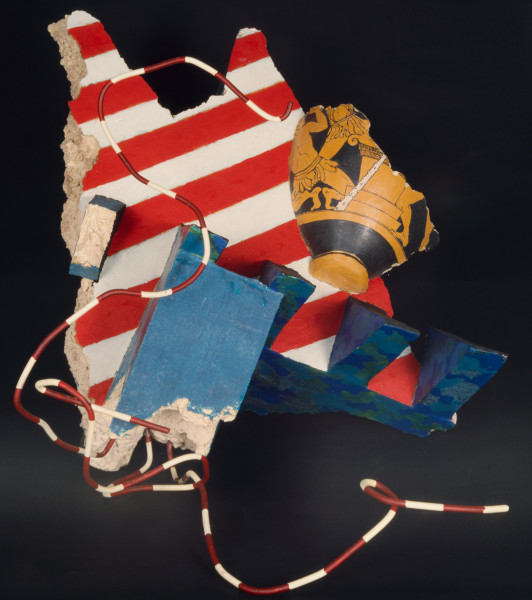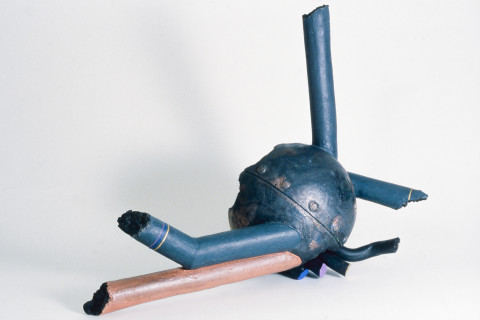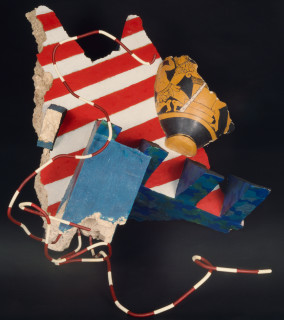Rod Bamford's first solo exhibition at Roslyn Oxley9 Gallery.
Exhibition Dates: 22 April – 10 May 1986
The heavy quiet as the Sunday heat strikes up from the pavement outside the old bank building in Uralla, N.S.W. belies the intensity of the atmosphere within. Rod Bamford darts amongst works in progress like a mad magician and casts about for words to amply describe the concepts he is expressing in clay. His work forces one to take his lateral look at history, and at those who have worked clay within it. The fragments of their work (and therefore their lives) are so often dug up, dated, categorised and from then on held forever, suspended from life and therefore from reappraisal. Certainly from further involvement in their own natural evolution.
Rod's shards provoke reappraisal by virtue of their scale and by the juxtapositions in which he places them. In doing this he challenges the presumptions and prejudices which accompany any particular reading of history from the evidence of historical events. A shock of realisation is that the shards from the rubbish dumps of this industrial era bear an uncanny resemblance to organic forms, especially as seen through the lens of a microscope. This implies the stunning universality of the physical nature of objects.
The figure of the jester, familiar from J. J. Kandler's small Meissen figurines appears here changed in scale. His gloved hand still proffers a jug of wine with gaiety, but a challenging twinkle of the eye appears behind the mask. He appears to embody European cultural decay and preciousness.
By contrast, the aristocratic figure, encased in her own fragments of history appears dead. Aesthetically she recalls the work of Della Robbia, historically she embodies British Empire. She is linked to potters through the ages by her tea drinking vessel. This in turn links her to the European fascination with porcelain, seen by some alchemists as a magic substance equivalent in its mysteries to gold.
By using such images Rod indicates his respect for the past and for past clay workers. The figure, in fact the entire exhibition is a cautionary tale to remind us that our perspective on history is formed by the way in which we spend our lives. Physically, Rod's sculptural pieces are precariously balance as are our historical suppositions. They can at any time have their images shattered by reappraisal.
FAY PORTER 1986









